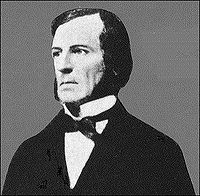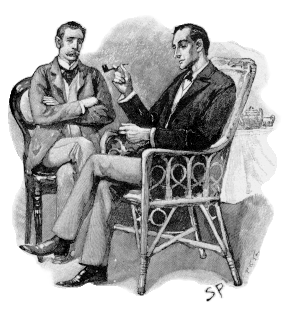Professor Moriarty
| James Moriarty | |
|---|---|
| Sherlock Holmes character | |
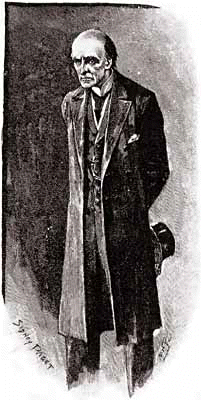 Professor Moriarty, illustration by Sidney Paget which accompanied the original publication of "The Final Problem". |
|
| Last appearance | The Adventure of the Final Problem |
| Created by | Arthur Conan Doyle |
| Information | |
| Aliases | The Napoleon Of Crime |
| Gender | Male |
| Occupation | Criminal mastermind |
| Nationality | English |
Professor James Moriarty is a fictional character and the archenemy of the detective Sherlock Holmes in the fiction of Sir Arthur Conan Doyle. Moriarty is a criminal mastermind, described by Holmes as the "Napoleon of Crime". Doyle lifted the phrase from a real Scotland Yard inspector who was referring to Adam Worth, a real life model for Moriarty. As he is depicted as Holmes' greatest enemy, Moriarty is considered to be the primary antagonist of the entire series.
Contents |
Appearance in Doyle's fiction
Professor Moriarty's first appearance and his ultimate end occurred in Doyle's story "The Final Problem", in which Holmes, on the verge of delivering a fatal blow to Moriarty's criminal ring, is forced to flee to the Continent to escape Moriarty's retribution. Moriarty follows, and the two apparently fall to their deaths while locked in mortal combat atop the Reichenbach Falls. During this story, Moriarty is something of a Mafia Godfather; he protects nearly all of the criminals of England in exchange for their obedience and a share in their profits. Holmes, by his own account, was originally led to Moriarty by the suggestion that many of the crimes he perceived were not the spontaneous work of random criminals, but the machinations of a vast and subtle criminal ring.
Moriarty plays a direct role in only one other of Doyle's Holmes stories: The Valley of Fear, which was set before "The Final Problem," but published afterwards. In The Valley of Fear, Holmes attempts to prevent Moriarty's agents from committing a murder. Moriarty does not meet Holmes in this story. In an episode where Moriarty is interviewed by a policeman, a painting by Jean-Baptiste Greuze is described as hanging on the wall; Holmes remarks on another work by the same painter to show it could not have been purchased on a professor's salary. The work referred to is La jeune fille à l'agneau; some commentators[1] have described this as a pun by Doyle upon the name of Thomas Agnew of the gallery Thomas Agnew and Sons, who had a famous painting[2] stolen by Adam Worth, but was unable to prove the fact.[1]
Holmes mentions Moriarty reminiscently in five other stories: "The Empty House" (the immediate sequel to "The Final Problem"), "The Norwood Builder," "The Missing Three-Quarter," "The Illustrious Client,", and "His Last Bow." More obliquely, a 1908 mystery by Doyle, The Lost Special, features a criminal genius who could be Moriarty and a detective who could be Holmes, although neither is mentioned by name.
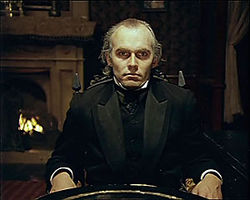
Although Moriarty appeared in only two of the 60 Sherlock Holmes tales by Conan Doyle, Holmes' attitude to him has gained him the popular impression of being Holmes' arch-nemesis -- as "The Final Problem" clearly states, Holmes spent months in a private war against Moriarty's criminal operations—and he has been frequently used in later stories by other authors, parodies, and in other media.
In the Doyle stories, narrated by Holmes' assistant Dr. Watson, Watson never meets Moriarty (only getting distant glimpses of him in "The Final Problem"), and relies upon Holmes to relate accounts of the detective's battle with the criminal.
Doyle himself is inconsistent on Watson's familiarity with Moriarty. In "The Final Problem", Watson tells Holmes he has never heard of Moriarty, while in The Valley of Fear, set earlier on, Watson already knows of him as "the famous scientific criminal."
Moriarty's weapon of choice is the "air-rifle", a unique weapon constructed for the Professor by a blind German mechanic, von Herder, and used by his employee Colonel Sebastian Moran. It closely resembled a cane, allowing for easy concealment, was capable of firing revolver bullets and made very little noise when fired, making it ideal for sniping; the weapon became infamous for being Moriarty's favorite tool. Moriarty also has a marked preference for organising "accidents". His attempts to kill Holmes include falling masonry and a speeding horse drawn van. He is also responsible for stage managing the death of Birdy Edwards.
Holmes described Moriarty as follows:
"He is a man of good birth and excellent education, endowed by nature with a phenomenal mathematical faculty. At the age of twenty-one he wrote A Treatise on the Binomial Theorem, which has had a European vogue. On the strength of it he won the mathematical chair at one of our smaller universities, and had, to all appearances, a most brilliant career before him.But the man had hereditary tendencies of the most diabolical kind. A criminal strain ran in his blood, which, instead of being modified, was increased and rendered infinitely more dangerous by his extraordinary mental powers. Dark rumours gathered round him in the University town, and eventually he was compelled to resign his chair and come down to London. He is the Napoleon of Crime, Watson, the organiser of half that is evil and nearly all that is undetected in this great city..."
—Holmes, "The Final Problem"
The "smaller university" involved has been claimed to be one of the colleges that later comprised the University of Leeds.[3] However, in Sherlock Holmes: The Unauthorized Biography, the "smaller university" is said to be Durham.[4]
Holmes also states Moriarty wrote The Dynamics of An Asteroid, describing it as "a book which ascends to such rarefied heights of pure mathematics that it is said that there was no man in the scientific press capable of criticising it."
Doyle's original motive in creating Moriarty was evidently his intention to kill Holmes off. "The Final Problem" was intended to be exactly what its title says; Doyle sought to sweeten the pill by letting Holmes go in a blaze of glory, having rid the world of a criminal so powerful and dangerous any further task would be trivial in comparison (as Holmes says in the story itself). Moriarty only appeared in one book because, quite simply, having him constantly escape would discredit Holmes, and would be less satisfying.
Eventually, public pressure and financial troubles forced Doyle to bring Holmes back.
A point of interest is that the "high, domed forehead" was seen as the sign of a prodigious intellect during Conan Doyle's time. In giving Moriarty this trait, which had already appeared in both Sherlock Holmes and the detective's brother Mycroft, Doyle may have intended to portray Moriarty as a man having an intellect equal or greater than that of Holmes, and thus the only man capable of defeating him. Moriarty died when he fell off the Reichenbach Falls and Sherlock only faked his death to protect Watson from being pursued.[5]
Moriarty's family, and first name
The stories give a number of indications about the Professor's family, some seemingly contradictory. In his first appearance (in the story "The Final Problem"), Moriarty is only referred to as "Professor Moriarty" -- no first name is mentioned. Watson does, however, refer to the name of another family member when he writes of "the recent letters in which Colonel James Moriarty defends the memory of his brother." Later, in "The Adventure of the Empty House" Holmes refers to Moriarty as "Professor James Moriarty". This is the only time Moriarty is given a first name, and oddly, it is the same as that of his brother. In The Valley of Fear (written after the preceding two stories, but set earlier), Holmes says of Professor Moriarty: "He is unmarried. His younger brother is a station master in the west of England."
These references do not unambiguously establish how many Moriarty brothers there actually were. (It is possible the Colonel and the station master were the same brother, but it is equally possible they were not.) Consequently, questions surrounding the number of Moriarty brothers there were, and which of them were called James, has provided much amusement for Sherlock Holmes fans in the years since the stories were first published.
Simon Newcomb and other real world role models
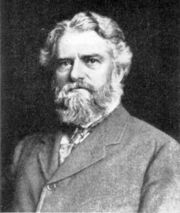
In addition to the master criminal Adam Worth, there has been much speculation[6] among astronomers and Sherlock Holmes enthusiasts that Doyle based his fictional character Moriarty on the American astronomer Simon Newcomb. Newcomb was revered as a multitalented genius, with a special mastery of mathematics, and he had become internationally famous in the years before Doyle began writing his stories. More pointedly, Newcomb had earned a reputation for spite and malice, apparently seeking to destroy the careers and reputations of rival scientists.
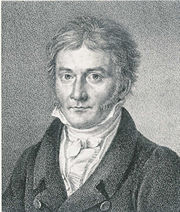
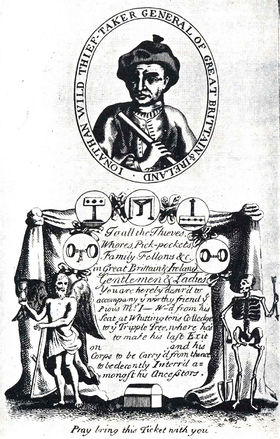
Professor Moriarty's reputed feats might also have been inspired by the accomplishments of real world mathematicians. If the names of the academic papers are reversed, they describe real mathematical events. Carl Friedrich Gauss wrote a famous paper on the dynamics of an asteroid[7] in his early 20s, which certainly had a European vogue, and was appointed to a chair partly on the strength of this result. Srinivasa Ramanujan wrote about generalisations of the binomial theorem,[8] and earned a reputation as a genius by writing articles that confounded the best extant mathematicians. Gauss's story was well known in Doyle's time, and Ramanujan's story unfolded at Cambridge from early 1913 to mid 1914;[9] The Valley of Fear, which contains the comment about maths so abstruse that no one could criticise it, was published in September 1914.
Des MacHale, in his George Boole : his life and work (1985, Boole Press) suggests George Boole may have been a model for Moriarty.
The model which Conan Doyle himself mentions (through Sherlock Holmes) in The Valley of Fear is the London arch-criminal of the 18th century, Jonathan Wild. He mentions this when seeking to compare Moriarty to a real-world character that Inspector Alec MacDonald might know, but it is in vain as MacDonald is not so well read as Holmes.
It is averred the surviving Jesuit priests at Stonyhurst instantly recognized the physical description of Moriarty as that of the Reverend Thomas Kay, S.J., Prefect of Discipline, under whose aegis Doyle came as a wayward pupil. According to this hypothesis, Doyle as a private joke has Inspector MacDonald describe Moriarty: "He'd have made a grand meenister with his thin face and grey hair and his solemn-like way of talking."[10]
Finally, Conan Doyle is known to have used his former school, Stonyhurst College, as inspiration for details of the Holmes series; among his contemporaries at the school were two boys named Moriarty.[11]
Moriarty in popular culture
Depictions
Radio
- Orson Welles played Professor Moriarty opposite Sir John Gielgud's Holmes in the 1950s series broadcast of "The Final Problem".
- In the BBC Radio November 4, 1992 broadcast of "The Final Problem" and the February 24th 1993 broadcast of "The Empty House", Moriarty was played by Michael Pennington.
Film
- In Case Closed: The Phantom of Baker Street, Professor Moriarty makes an appearance at The Trump Club on Baker Street.
- George Zucco appeared as Professor Moriarty in The Adventures of Sherlock Holmes.
- Vincent D'Onofrio appeared as Professor Moriarty in Sherlock: Case of Evil.
- Laurence Olivier appeared as Moriarty in The Seven-Per-Cent Solution (1976). However, in this version he is not the story's villain, but merely a harmless man who becomes an increasingly paranoid victim of Holmes' delusions, based on the fact that Moriarty indirectly contributed to the death of Holmes' mother as her lover.
- Lionel Atwill appeared as Professor Moriarty in Sherlock Holmes and the Secret Weapon.
- Henry Daniell appeared as Professor Moriarty in The Woman in Green.
- Anthony Andrews appeared as Professor Moriarty in Hands of a Murderer.
- Paul Freeman appeared as Professor Moriarty in the 1988 comedy Without a Clue, revolving around the premise that Holmes is a fictional creation of Watson's, and Watson is the real crime-solving genius.
- In Young Sherlock Holmes, Anthony Higgins plays Holmes' schoolmaster, Rathe, who turns out to be an evil mastermind. After the end credits, there's a brief scene in which Rathe enters an inn and signs the ledger as Moriarty. Higgins also portrayed Holmes in the 1993 TV film 1994 Baker Street: Sherlock Holmes Returns, making him one of the only two actors to portray both Holmes and Moriarty (Richard Roxburgh being the other).
- In the 2003 film The League of Extraordinary Gentlemen, Richard Roxburgh portrays the main villain named the Fantom, whose true identity was eventually revealed to be Professor James Moriarty. Three clues to the Fantom's real name were subtly slipped into the course of the film's dialog. By a curious coincidence, Roxburgh also portrayed Holmes in the 2002 TV adaptation of The Hound of the Baskervilles, making him one of the only two actors to portray both Holmes and Moriarty (Anthony Higgins being the other).
- In the Disney animated film The Great Mouse Detective, the character Professor Ratigan (the archnemesis of Basil of Baker Street, the Holmes-esque hero of the film ) is an obvious parallel and tribute to the character of Moriarty, even sharing his alleged first name. Ratigan was voiced by Vincent Price.
- Leo McKern portrayed a comedic Moriarty in The Adventure of Sherlock Holmes' Smarter Brother.
- A computer game simulation of Moriarty appears in Case Closed: The Phantom of Baker Street. In the game he is Jack the Ripper's creator and mentor. Conan Edogawa warns him not to go to the Reichenbach Falls, where he would supposedly meet his death.
- In the 2009 film, Sherlock Holmes, Irene Adler's employer appears as a mysterious villain veiled in shadow possessing a Derringer attached to a device on his wrist. Later, he was identified as Moriarty. It's still unknown who provided the character's voice. Some have speculated that he is portrayed by Brad Pitt, who previously worked with director Guy Ritchie on 2000's Snatch, though Ritchie himself declined to confirm the rumor. Moriarty has also been touted as the main antagonist's in Sherlock Holmes 2 with Gary Oldman and Daniel Day-Lewis both being rumoured to play the part although neither rumour has as of yet been confirmed. Ed Tolputt is later identified by IMDB as the Anonymous Character, who is assumed to be Professor Moriarty in the first film.[12]
Moriarty is the only character in the Sherlock Holmes films to have been killed off two (not three) times in the same series. Both deaths occurred in the Basil Rathbone-Nigel Bruce Holmes films, and all three involved him falling from a great height (possibly a nod to his demise at the Reichenback Falls in "The Final Problem").
- In Sherlock Holmes and the Secret Weapon, he fell sixty feet into the sewers.
- In The Woman in Green, he fell from a high building when a drainpipe that he was clutching onto broke.
(He also falls in The Adventures of Sherlock Holmes. Here Holmes throws a straight left into Moriarty's jaw sending him through a battlement and off the top of the Tower of London. But this is not part of the 12 movie series from Universal, despite the use of Basil Rathbone and Nigel Bruce.)
Likewise the Moriarty-esque character of Professor Ratigan in Basil the Great Mouse Detective falls from Big Ben along with his Holmesian arch-nemesis Basil who survives although Ratigan himself apparently does not.
Television
- Moriarty was the one behind nearly all the crimes in the cartoon Sherlock Holmes in the 22nd Century, having been cloned back to life by a rogue geneticist, requiring Holmes to be 'resurrected' as well in order to match him.
- John Huston portrayed Moriarty in the made-for-TV movie Sherlock Holmes in New York opposite Roger Moore's Holmes.
- In the Soviet series of television films The Adventures of Sherlock Holmes and Dr. Watson by Igor Maslennikov, Moriarty was played by Viktor Yevgrafov and voiced by Oleg Dahl in the second film of the series.
- Eric Porter portrayed Professor Moriarty in two episodes of The Adventures of Sherlock Holmes: "The Red-Headed League" and "The Final Problem", and in The Return of Sherlock Holmes: "The Empty House". The first two stories were filmed in 1985, with Jeremy Brett as Holmes, and David Burke as Watson, and the third in 1986 with Edward Hardwicke taking over the role of Dr. Watson. He also appeared as a hallucination in The Return of Sherlock Holmes: "The Devil's Foot".
- A holodeck simulation of Professor Moriarty, played by actor Daniel Davis, appeared in the Star Trek: The Next Generation episodes "Elementary, Dear Data" and "Ship in a Bottle", accidentally achieving sentience when Geordi LaForge asks the holodeck to create an opponent able to defeat Data (rather than Sherlock Holmes).
- Moriarty appears as a holographic character in the Futurama episode "Kif Gets Knocked Up a Notch", where he comes out of the Holoshed of the Nimbus with Attila the Hun, Jack The Ripper, and Evil (Abraham) Lincoln.
- On Doctor Who, the Master was made to be the Moriarty to the Doctor's Sherlock Holmes.
- The Darkwing Duck TV series (1991–1993) featured a mole-themed villain named Professor Moliarty, an obvious parody/homage.
- In "No Reason", an episode of House, Dr. Gregory House is shot by a man named Jack Moriarty. The television show contains many other similarities between its titular character and the famous detective.
- In The Strange Case of the End of Civilization as We Know It, Connie Booth plays Moriarty's granddaughter, Francine, who is disguised as the modern-day Mrs. Hudson.
- In the Batman: The Brave and the Bold episode "Trials of the Demon!", both Sherlock Holmes and Dr. Watson guest star. Dr. Watson mentions Moriarty, suggesting that he might be the one responsible for stealing the souls of women (the real culprit is Jim Craddock).
- "Elementary My Dear Winston", the third episode for the 1989 season of The Real Ghostbusters, features Holmes, Watson and Moriarty by way of "belief made manifest": so many people believed in them that they became real. Moriarty now has supernatural powers and employs the Hound of the Baskervilles as his henchman. Holmes and Moriarty are both sucked into the Ghostbusters' storage facility while wrestling, in the same manner as the conclusion of "The Final Problem."
- A version of the character also appeared in the anime series Sherlock Hound, being the villain behind every crime in the series. In this version he was an anthropomorphic dog, and more of a comical role.
- Moriarty is a lurking presence across the first two episodes of the BBC 2010 modern-day adaptation Sherlock, helping to arrange the crimes that take place in those episodes. In the third episode, he targets Holmes directly, presenting him with a series of investigative 'games' leading eventually to the first confrontation between the two arch-enemies. Moriarty is here portrayed as a vain, strutting, effete Metrosexual with a penchant for Vivienne Westwood suits and a high-pitched Dublin-accent. He goes by "Jim" rather than "James", and is revealed to be the "Consulting Criminal" to Holmes's Consulting Detective, hiring out his services to others to stage crimes. He is portrayed by Andrew Scott. Scott's Moriarty is perhaps the most overtly psychopathic depiction of the Napoleon of Crime to date. As a child he drowned a fellow student in a swimming pool for laughing at him and kept the student's beloved trainers as a memento of the occasion. Jim is usually in a disturbingly happy mood with occasional bouts of maniacal rage. Moriarty's fascination with Holmes has vaguely homoerotic undertones in this version.
Theatre
Jeremy Brett and Edward Hardwicke played Holmes and Watson in the Sherlock Holmes TV series made by Granada Television. Eric Porter played the professor. In the late 1980s Brett and Hardwicke appeared in the stage play The Secret of Sherlock Holmes by Jeremy Paul, a regular contributor to the series. The only characters in the play are Holmes and Watson and it highlights many aspects of their relationship from their first meeting to the Reichenbach Falls. In the second half it is indicated that Moriarty never existed: he was a figment of the imagination of Holmes who needed a worthy enemy as much as he needed a devoted friend like Watson. It might be noted that in The Adventure of the Final Problem Watson and Moriarty never actually come face-to-face.[13] The play has been re-staged with other actors.
Literature
- T. S. Eliot, a fan of Sherlock Holmes fiction, used the phrase the Napoleon of crime, in homage, to describe Macavity in Old Possum's Book of Practical Cats.
- In Neil Gaiman's Hugo Award winning short story "A Study in Emerald", the Moriarty and Holmes of an alternate history reverse roles. Moriarty (who, though never named as such in the story, is identified as the author of Dynamics of an Asteroid) is hired to investigate a murder. The murder has apparently been carried out by Sherlock Holmes (who signs his name Rache, an allusion to Doyle's first novella starring Holmes and Watson, A Study in Scarlet, in which the word Rache — German for revenge — is found written above the body of a murder victim) and Dr. Watson. The story is narrated by Colonel Sebastian Moran, given the rank of Major (Ret.) by Gaiman.
- In a 2006 comic book story featuring Lee Falk's The Phantom, the 19th Phantom has to fight Professor Moriarty. The climax of the story features the Phantom and Moriarty falling down a waterfall in the Bangalla jungles. At the end of the story, Moriarty is shown to be alive, as he returns to London to find "a detective named Sherlock Holmes".
- In Nicholas Meyer's 1976 novel The Seven-Per-Cent Solution, Professor Moriarty is portrayed as Holmes's childhood mathematics tutor, a whining little man with a guilty secret. He is incensed to hear that Holmes, apparently under the influence of cocaine, has depicted him as a criminal mastermind. Because of Holmes' worsening condition, and Moriarty's threats to tell the authorities about Holmes' addiction, Dr. Watson seeks the help of Sigmund Freud, who uncovers the truth behind Holmes' perception of "the Napoleon of Crime". This is one of many works to seize on the fact that Moriarty never actually shows his face in the Holmes canon. The novel The Seven-Per-Cent Solution was made into a 1976 film and starred Laurence Olivier as Professor Moriarty.
- In Michael P. Hodel and Sean M. Wright's novel Enter the Lion: A Posthumous Memoir of Mycroft Holmes, Jerrold Moriarty, the father of the Professor and his brothers, is Mycroft Holmes' immediate superior in the Foreign Office and plays an important part in a plot by former Confederate officers to involve the British government in a scheme to overthrow the United States government. His exposure by Mycroft and Sherlock leads to his suicide to avoid arrest, for which Professor Moriarty blames the Holmes brothers, and provides an explanation as to the antagonism between Sherlock Holmes and Professor Moriarty. The Professor himself makes two appearances in the novel.
- Michael Kurland has written a series of novels in which Moriarty is the hero: His organisation of crime is the method by which he raises the money required for his experimental physics apparatus. In the first book of the series, The Infernal Device, he foils a plot against Queen Victoria, reluctantly allying with Sherlock Holmes.
- John Gardner has written three novel featuring the arch-villain: The Return of Moriarty, in which the Professor, like Holmes, is shown to have survived the meeting at the Reichenbach, The Revenge of Moriarty and Moriarty (released posthumously in 2008 after the author's death in 2007). In these novels, Moriarty is depicted as a Victorian-era Al Capone or Don Corleone, single-handedly controlling London's organized crime structure. "The Professor" is not really Professor James Moriarty, but is really Professor Moriarty's younger brother who is also named James, who is just as brilliant as his older brother and who has taken over his brother's identity after impersonating, disgracing and then murdering the elder brother. It is possible, though not confirmed at this time, that the third book's title was to have been The Revolt of Moriarty.
- Moriarty appears in Alan Moore's The League of Extraordinary Gentlemen. Recruited from university by British Intelligence, he supposedly set up his criminal empire as part of an undercover operation which got out of hand. Having survived the encounter with Sherlock Holmes, he went on to become the head of British Intelligence under the code-name "M" (a nod to the James Bond novels and films), but still maintained his criminal interests. He instigated the creation of the League as a covert ops unit with plausible deniability and used them to recover an anti-gravity mineral called Cavorite which had been stolen by his crime lord rival The Doctor. He then used the Cavorite to bomb the East End of London in an attempt to destroy The Doctor but was thwarted by the League which had uncovered the double-cross. Following his supposed death (indicated, but not clearly portrayed, as he "falls" into the sky, due to the Cavorite), he was ironically succeeded as "M" by Mycroft Holmes, Sherlock's older brother. In The League of Extraordinary Gentlemen: Black Dossier, it is suggested that Jack Kerouac's Dean Moriarty (from On the Road) is his great-grandson, and the rivalry between the two criminals is continued by the fact that The Doctor's great-grandson is Kerouac's other creation, Doctor Sax. In the third volume of the series, set over 60 years later, Mina Murray comes across his carcass, still holding onto the cavorite inside a block of ice floating through space.
- A similar character appeared in the Solar Pons series, which was a pastiche of the Sherlock Holmes stories. The Moriarty figure was Baron Knoll, a German spy and a socialite who appeared in only two stories (much like Moriarty).
- Moriarty appears in Anne Lear's short story "The Adventure of the Global Traveller" (1978). Surviving the falls via a net which in turn drops a dummy, he travels back in time, inadvertently creating the paradoxical lines of Third Murderer in Macbeth. The story is told in the form of a note addressed to Holmes, posing the question of where these lines came from.
- In Kim Newman's short story "The Red Planet League" (collected in Gaslight Grimoire), Moriarty is responsible for inspiring H. G. Wells to write The War of the Worlds after perpetrating a scientific hoax on a rival scientist. Newman's novel Anno Dracula depicts Moriarty as the spokesman of a league of villains drawn from popular fiction. In this Moriarty is a vampire and is no longer interested in criminal pursuits as he now has an eternal life which he can dedicate to intellectual contemplation.
- In DC Comics' Crime Bible: The Five Books of Blood#1 it's stated that within the Crime Bible exist the "Book of Moriarty".
- Commenting on Nero Wolfe's prolonges struggle with the powerful crime boss Arnold Zeck, Michael Dirda – book critic for The Washington Post – wrote "I was thrilled when Wolfe finally encountered his own Moriarty in the archvillain Arnold Zeck," .[14] British author and literary critic David Langford has also noted that the relationship between Zeck and Wolfe compares to that of Moriarty and Sherlock Holmes.[15]
- Philip José Farmer's Science Fiction/Steampunk parallel novel "The Other Log of Phileas Fogg" asserts that Moriarty and Jules Verne's Captain Nemo were one and the same person.
- Moriarty appears in a short story by Donald Thomas, in his collection The Secret Cases of Sherlock Holmes, as the mastermind of a blackmail plot involving the alleged bigamy of Prince George. His younger brother, Col. James, also appears as the antagonist of another short story in Thomas's The Execution of Sherlock Holmes.
- In The Beekeeper's Apprentice by Laurie R. King, an elderly Holmes and his protegee, Mary Russell, are pursued by Moriarty's middle-aged daughter, also an Oxford mathematics don, and a criminal kingpin in her own right.
Other media
- The PC game Eagle Eye Mysteries features a character named Mark Moriarty, a high school student who is at the heart of many of the mysteries the player has to solve. In one mystery, on the subject of Sherlock Holmes, he actually mentions that he has the same name as Holmes' nemesis.
- The male lead in Liar-Soft's 2008 visual novel Shikkoku no Sharnoth ~What a beautiful tomorrow~, who initially goes by the pseudonym "M", is later revealed to be Moriarty.
- The 1950s radio comedy programme The Goon Show had, as one of its principal characters, an incompetent 'Criminal Mastermind' named Count Jim Moriarty.
- Moriarty was also seen in the PC game Sherlock Holmes: The Awakened, in which Moriarty has survived the falls of Reichenbach and is in weak condition in a mental hospital.
- In the online game Wizard101, a cat version of Moriarty (Meowiarty) is the main villain in a London-style world, Marleybone.
- Moriarty, along with Fu Manchu and Dracula, is referenced in The Kinks' song "The Village Green Preservation Society"
- In the Marvel Comics universe, Creator Stan Lee compared the relationship between Reed Richards and Doctor Doom to that of Holmes and Moriarty.
References
- ↑ 1.0 1.1 JOHN MORTIMER (August 24, 1997). "To Catch a Thief". NY Times. http://www.nytimes.com/books/97/08/24/reviews/970824.24mortimt.html.. A book review of THE NAPOLEON OF CRIME — The Life and Times of Adam Worth, Master Thief., by Ben Macintyre.
- ↑ "A portrait of Georgiana Cavendish, Duchess of Devonshire by Thomas Gainsborough". http://www.damforstmuseum.org/images/stolen/gainsborough_duchess.jpg.
- ↑ Bowers, John F., "James Moriarty: A Forgotten Mathematician", December 23, 1989, New Scientist
- ↑ Nick Rennison, Sherlock Holmes: The Unauthorized Biography, p. 68
- ↑ The Guardian - Holmes was Moriarty
- ↑ Schaefer, B. E., 1993, Sherlock Holmes and some astronomical connections, Journal of the British Astronomical Association, vol.103, no.1, p.30-34. For a summary of this point, see this New Scientist Article, also from 1993.
- ↑ Donald Teets, Karen Whitehead, 1999, The Discovery of Ceres: How Gauss Became Famous, Mathematics Magazine, Vol. 72, No. 2 (Apr., 1999), pp. 83-93
- ↑ Ramanujan Psi Sum - from Wolfram MathWorld
- ↑ See, for example, the book by Kanigel, The Man Who Knew Infinity
- ↑ The Oxford Sherlock Holmes, The Valley of Fear, Explanatory Notes to p. 15, at p. 181 (1993)
- ↑ Arthur Conan Doyle
- ↑ Katey Rich (2009-12-28). "Is Brad Pitt In Sherlock Holmes After All?". http://www.cinemablend.com/new/Is-Brad-Pitt-In-Sherlock-Holmes-After-All-16324.html. Retrieved 2010-01-04.
- ↑ The Secret of Sherlock Holmes Play
- ↑ Dirda, Michael. An Open Book (page 122). W.W. Norton & Company, 2004. ISBN 0-393-05756-9
- ↑ Langford, David. A Stout Fellow ... on Nero Wolfe. Million Magazine, 1992. Langford calls "the dread and highly respectable mastermind Arnold Zeck ... Stout's equivalent of Professor Moriarty."
External links
- The Final Problem - in easy to read HTML format.
- The Valley of Fear - in easy to read HTML format.
- Sherlock Holmes Public Library
|
||||||||||||||||
